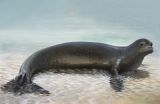(Press-News.org) VIDEO:
The drift trajectories of virtual hatchling turtles from the breeding beaches to their juvenile development areas using the NEMO ocean model.
Click here for more information.
New research has found that adult sea-turtle migrations and their selection of feeding sites are directly influenced by their past experiences as little hatchlings adrift in ocean currents.
When they breed, adult sea turtles return to the beach where they were born. After breeding, adult sea turtles typically migrate several hundreds to thousands of kilometres to their feeding habitats. However, there has been little information about how turtles chose their feeding sites. For example, some turtles migrate to feeding habitats thousands of kilometres away, while other turtles don't migrate or feed in the open ocean.
The study, which involves the University of Southampton, looked at what habitats the turtles would have experienced as juveniles. New-born hatchling sea turtles are too small to track with satellite tags. However, when they emerge from their eggs, they head to the ocean and drift with ocean currents to their juvenile development habitats. The researchers combined all the available satellite tracking data on adult turtles with models of how the world's sea water moves past nesting sites to study where the hatchling sea turtles drift to.
By comparing global patterns in the migrations of all satellite tracked sea turtles with global hatchling drift patterns, they showed that adult sea turtle migrations and foraging habitat selections were based on their past experiences drifting with ocean currents.
Dr Rebecca Scott, who led the study soon to be reported in the journal Ecology, says: "Hatchlings' swimming abilities are pretty weak, and so they are largely at the mercy of the currents. If they drift to a good site, they seem to imprint on this location, and then later actively go there as an adult; and because they're bigger and stronger they can swim there directly," explained Dr Scott, who is based at the GEOMAR Helmholtz Centre for Ocean Research in Kiel, Germany.
"Conversely, if the hatchlings don't drift to sites that are suitable for adult feeding, you see that reflected in the behaviour of the adults, which either do not migrate or they feed in the open ocean, which is not the normal strategy for most turtle species."
Many animal groups undertake great migrations, and the process of learning where to go on these travels can take several forms. For example, some juvenile whales and birds learn migration routes by following their mothers or more experienced group members, whilst other bird and insect species seem to be born with the information or a map sense that informs them where they should migrate.
However, neither of these strategies works for turtles. Once the adult female has laid her eggs on a beach, her involvement in her offspring's development ends. When the hatchlings crawl down the beach into the water, they are on their own; there is no experienced turtle to follow, and they go where the ocean takes them.
Dr Bob Marsh from the University of Southampton, who was Dr Scott's supervisor and co-author of the study, said: "Although it is known that ocean currents have a large influence on the dispersion of small planktonic organisms, these findings reveal ocean currents also directly shape some the migrations of some of the largest, most powerful long distance migrants in the animal kingdom."
INFORMATION: END
Turtle migration directly influenced by ocean drift experiences as hatchlings
2014-05-14
ELSE PRESS RELEASES FROM THIS DATE:
Mobile phone data helps combat malaria
2014-05-14
An international study led by the University of Southampton and the National Vector-borne Diseases Control Programme (NVDCP) in Namibia has used mobile phone data to help combat malaria more effectively.
The study used anonymised mobile records to measure population movements within Namibia in Africa over the period of a year (2010-11). By combining this data with information about diagnosed cases of malaria, topography and climate, the researchers have been able to identify geographical 'hotspots' of the disease and design targeted plans for its elimination.
Geographer ...
Unified superconductors
2014-05-14
Leading-edge imaging and medical diagnostics, but also magnetic levitation trains: these are examples of technology relying on "superconductors". Superconductors are materials in which electrons flow without dissipation and which have very special properties such as expelling all magnetic fields. The physics underlying the phenomenon has only been explained for low-temperature superconductors, those exhibiting their properties at temperatures close to absolute zero. The so-called high-temperature superconductors remain one of the major mysteries of the physics of matter, ...
Widely used drug no more effective than FDA approved medication in treating epileptic seizures
2014-05-14
A National Institutes of Health-sponsored study published in the Journal of the American Medical Association (JAMA) showed that lorazepam - a widely used but not yet Food and Drug Administration (FDA) approved drug for children - is no more effective than an approved benzodiazepine, diazepam, for treating pediatric status epilepticus.
Status epilepticus is a state in which the brain is in a persistent state of seizure. By the age of 15, 4 to 8 percent of children experience a seizure episode, which can be life threatening if they aren't stopped immediately. Status epilepticus ...
In the wake of high-profile battery fires, a safer approach emerges
2014-05-14
As news reports of lithium-ion battery (LIB) fires in Boeing Dreamliner planes and Tesla electric cars remind us, these batteries — which are in everyday portable devices, like tablets and smartphones — have their downsides. Now, scientists have designed a safer kind of lithium battery component that is far less likely to catch fire and still promises effective performance. They report their approach in the Journal of the American Chemical Society.
Lynden Archer, Geoffrey Coates and colleagues at Cornell University explain that the danger of LIBs originates with their ...
Relationship satisfaction linked with changing use of contraception
2014-05-14
Women's sexual satisfaction in long-term heterosexual relationships may be influenced by changes in hormonal contraceptive use, research from the University of Stirling shows.
The study, published in Psychological Science, a journal of the Association for Psychological Science, was carried out by researchers from the universities of Stirling, Glasgow, Newcastle, Northumbria and Charles University in Prague.
The team looked at a sample of 365 couples, and investigated how satisfaction levels – in both sexual and non-sexual aspects of long-term relationships – were influenced ...
A new approach to treating peanut and other food allergies
2014-05-14
These days, more and more people seem to have food allergies, which can sometimes have life-threatening consequences. In ACS' Journal of Agricultural and Food Chemistry, scientists report the development of a new type of flour that someday could be used in food-based therapies to help people better tolerate their allergy triggers, including peanuts.
Mary Ann Lila and colleagues note that of the 170 foods that cause allergic reactions, peanuts can be the most dangerous. These reactions can range from mild itching and hives to life-threatening anaphylactic shock, in which ...
Extinct relative helps to reclassify the world's remaining 2 species of monk seal
2014-05-14
The recently extinct Caribbean monk seal (Monachus tropicalis) was one of three species of monk seal in the world. Its relationship to the Mediterranean and Hawaiian monk seals, both living but endangered, has never been fully understood. Through DNA analysis and skull comparisons, however, Smithsonian scientists and colleagues have now clarified the Caribbean species' place on the seal family tree and created a completely new genus. The team's findings are published in the scientific journal ZooKeys.
First reported by Columbus in 1494, the Caribbean monk seal ranged ...
Research reveals New Zealand sea lion is a relative newcomer
2014-05-14
The modern New Zealand sea lion is a relative newcomer to our mainland, replacing a now-extinct, unique prehistoric New Zealand sea-lion that once lived here, according to a new study.
A team of biologists from New Zealand's University of Otago estimates that this prehistoric mainland sea-lion population became extinct as recently as 600 years ago, and was then replaced by a lineage previously limited to the waters of the cold subantarctic.
The Marsden-funded study, carried out by Otago Zoology PhD student Catherine Collins, and led by Professor Jon Waters, set out ...
New technology simplifies production of biotech medicines
2014-05-14
The final step in the production of a biotech medicine is finishing with the correct sugar structure. This step is essential for the efficacy of the medicine, but it also makes the production process very complex and expensive. Leander Meuris, Francis Santens and Nico Callewaert (VIB/UGent) have developed a technology that shortens the sugar structures whilst retaining the therapeutic efficiency. This technology has the potential to make the production of biotech medicines significantly simpler and cheaper.
Sugar structures are essential for the mechanism of biotech ...
@millennials wary of @twitter, #MSU study finds
2014-05-14
EAST LANSING, Mich. --- A new study indicates young adults have a healthy mistrust of the information they read on Twitter.
Nearly anyone can start a Twitter account and post 140 characters of information at a time, bogus or not, a fact the study's participants seemed to grasp, said Kimberly Fenn, assistant professor of psychology at Michigan State University.
"Our findings suggest young people are somewhat wary of information that comes from Twitter," said Fenn, lead investigator on the study. "It's a good sign."
The study, funded by the National Science Foundation, ...




